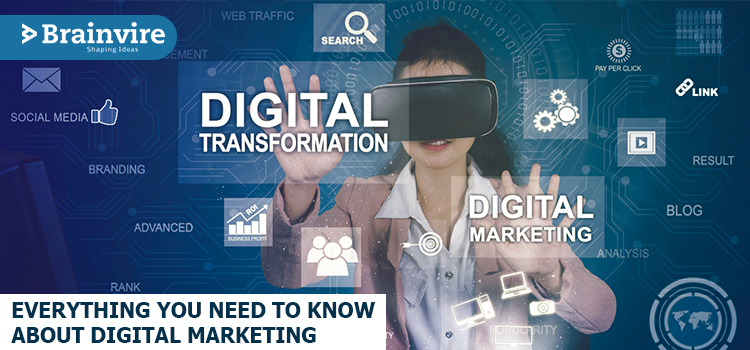
Top 7 Augmented Reality Trends that Will Prevail in 2019-20
Talking About Top 7 Augmented Reality Trends that Will Prevail in 2019-2020, Do you know what giants such as Microsoft, Amazon.com, Bosch, and Ikea share in common? Any guesses? The answer is that all these organizations have implemented Augmented Reality or AR technology intending to upsurge user experience.
Augmented Reality is a future-based innovative technology that integrates a real-world environment with superimposed computer-generated digital information. This means AR combines real and digital-based scenes, texts, sounds, and effects.
Let’s have a view of some of the important statistics and figures related to technology.
- Statista reports that the global market size of Augmented Reality is expected to reach around $198 billion by 2025.
- It is being estimated that about 1 billion users will adopt augmented reality by 2020.
- AngelList has listed about 543 startups using AR technology.
Augmented Reality to Enhance the Shopping Experience for Customers
Gartner has suggested in a report that Augmented Reality is one of the most prevailing retail trends and that about 100 million customers are expected to use AR-based shopping technologies. The boom is also due to an increase in the number of smartphone devices and gadgets. The developers are building AR-enabled applications, which the users utilize as part of their shopping experience.
A study has revealed that companies implementing augmented reality will find 48% more customer bases. The same report indicates that only 15% of the retailers are currently using AR technology, where 32% of retailers are planning to adopt this futuristic technology.
We can put forward the example of a US-based apparel showroom, which uses AR technology to offer the try-before-you-buy facility to its consumers. It makes use of smart mirrors capable of scanning RFID tags, bringing recommendations to the brick-and-mortar shopping experience. The jewelry iPad App Infusing Augmented Reality saw a 59% hike in customer engagement.
Mobile AR Becomes the Show’s Topper
Apple introduced the concept of Augmented Reality to a wide range of increasingly mobile audiences. The iPhone giant unveiled the concept of ARKit 2.0 at the Worldwide Developers Conference (WWDC) last year in 2018. This new technology has put the mobile AR on the same platform as handset-enabled AR. And that was not all. Apple also brought forward the notion of 3D object detection. It is seen as an improvement in predictable tracking. It allowed iOS developers to practically use ARKit while creating mobile applications.
The company has also launched a new file format for displaying 3D objects that will offer the full experience of an AR object. The format has been termed Universal Scene Description (USDZ), which will also support third-party apps and software.
There has been a steady increase in the AR mobile user base with 250 million customers adopting the ARCore-based software in Android smartphones. iOS App Development Services is way ahead in the competition after the launch of ARKit with a user base of 380 million. This number is certainly going to scale further as new smartphones hit the market.
Enterprises to Reap Far More Benefits
Various enterprises such as retail, e-commerce, furniture, jewelry, medical and healthcare, education, cosmetics, gaming, and real-estate are leading forward in reaping the benefits of augmented reality. They are making use of smart glasses with AR-based headsets to streamline various activities.
We can further cite the example of Microsoft HoloLens 2, which is a digital smart product that will help to improve raw processing power, battery life, and wearability. The product is slated to be launched later this year. The manufacturing industry escalated its production and improved its quality to industrial standards. According to research, about 14 million American workers will be using smart glasses in their jobs by 2025. AR has also accelerated the integration of Industry 4.0 applications.
Augmented Reality Partners with Artificial Intelligence
Do you know what happens when two of the most powerful technologies align together? Artificial Intelligence and Machine Learning partners with Augmented Reality to bring a boom in the technological sector. So, what are the implications? First and foremost, it boosts the shopping experience to make it more personal and customized. It provides a personal, in-home experience to increase customer loyalty. It allows consumers to get more engaged with the brand.
Machine Learning helps to deliver search results, matching the product needs according to the specific needs of the customers. Moreover, e-commerce giant Amazon has witnessed a 35% hike in sales due to a recommendation engine, which largely relies on Artificial Intelligence.
The major driving innovative forces have been Point-and-shoot retail AR solutions. A customer can get full Artificial Intelligence support while he is in the store. This means that all his queries regarding the prices, product features, discount offers, and warranty are answered by a Chatbot-based Natural Language Processing (NLP) technology. The store can then prepare a unique customer profile based on the data collected to offer greater personalization on his next visit.
Introducing WebAR
Chrome AR is one of the much-awaited products that has gained the spotlight in 2019. So, it is not only the web applications that are getting enabled AR technology, but the AR-based websites have also got into use. These sites offer the same level of functionality. The developers also received an unsupported and unofficial version of WebAR on GitHub.
Another popular web browser Mozilla has also got in touch with WebAR to introduce AR solutions in Firefox. The idea is to simplify the adoption of AR through the installed user bases of web browsers. The three major mobile operating systems – iOS, Android, and Windows – are quick to adopt WebAR standards.
These WebAR standards are in the process of getting established as the adoption of AR technology in web browsers are under active development. There are two procedures that a developer can follow to implement AR in web browsers. The first is to port the existing libraries and the second is to build new ones. One can expect that WebAR will be accessible on every virtually updated web browser.
AR to Establish Improved Collaboration with Remote Assistance
Talking About Top 7 Augmented Reality Trends that Will Prevail in 2019-2020, Business organizations often faced problems during conference calls and important presentations if the employee wasn’t physically present. However, thanks to AR, the issue has been resolved with the creation of mixed-reality settings. The virtual environment allows every person to view each other even if the person is present in a remote location. Top Software Development Company can help in creating a video calling system that implements AR to build holographic-style representations of participants.
Evolution of the Automobile Industry with AR
At a time when the world is moving towards driverless and automated vehicles, automobile manufacturers have begun using augmented reality and artificial intelligence technology. The automobile sector is embarking on its digital presence through developments in voice assistant systems such as Siri. The company is also planning to introduce dashboard-mounted display graphics using camera footage. This innovative technology will help in decreasing the road accidents at it will warn the driver beforehand that he is about to enter an accident-prone zone. Statista has predicted that the market value of AR-enabled automobile sector will reach up to 6.79 billion USD by 2025.
Besides that, the use of AR technology will also help the driver to identify the right direction and information about the frequently used lanes to avoid traffic congestion. It is important to note that some of the top-notch car manufacturers such as Mercedes Benz, Tesla, Toyota, and Volvo have already agreed to implement this technology to offer enhanced services.
Augmented Reality in the Gaming Industry
Gaming enthusiasts don’t just have to contend with traditional mobile gaming apps. The latest news is that AR technology has hit the game development industry. What better example can be cited than Pokemon Go, which has crossed the limits of popularity. According to the research, global spending on AR-based games is expected to be around 5.5%. The AR-enabled games have been divided into different categories such as geo-location-based AR games, shooting games, horror games, and so on.
On An Ending Note
Talking About Top 7 Augmented Reality Trends that Will Prevail in 2019-2020, Augmented Reality is the buzzword today, but it isn’t a new term in the digital business world. It is playing a crucial role in driving more sales and traffic into mobile and web applications by surging the customer experience. It has also disrupted a wide range of industries such as gaming, automobile, retail, manufacturing, healthcare, and more.
If you are looking forward to implementing AR technology into your business process, get in touch with expert developers today!








